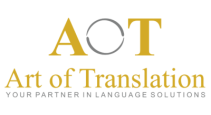Machine translation (MT) means the translation of a text by computer with no human involvement and should not be confused with computer assisted translation (CAT). With CAT, a human translator will be assisted by translation software to translate documents. This software creates a memory of translated sentences that are then stored for future use and reference, which maintains consistency and can speed up the translation process.
Research has shown an increase in machine translation use globally, especially with the introduction of Neural Machine Translation (NMT). Neural MT relies on the users to “correct” the MT suggestions, which constantly expands and hones its output. This manual reworking of the MT output is called post editing, and, as we have discovered during our research, this can sometimes take a translator just as long as it would to translate the sentence from scratch in the first place. So that begs the question – when could you use MT?
MT can certainly come in handy in a few situations. For example, your boss sends an attachment that contains over 1,000 pages of emails that he needs translated in 24 hours. He is not going to use them for anything but just needs to get the gist of what they say. In this case, due to the fact he just wants the data for an overview, there is no way we can translate this much within that tight deadline, so we would suggest a machine translation. It should be noted that we would never use Google Translate or another public MT program, due to the data security risk they post. If using Google Translate to translate text that contains personal, sensitive, or confidential data, please note that it becomes the property of Google… Make sure you read their Privacy Policy carefully!
Another example of when to use MT: You discover that you have a relative living in France, and you need to send them an urgent letter. The problem is you do not know any French at all! A human translator would be your best bet, but you do not have the time, so you type up the letter and request MT into French without post editing, due to time constraints. It would be prudent to add a note to tell them that it was translated with MT so they do not fall off their chair from the gibberish they might be reading! As language professionals, we would always recommend a full post-editing in any circumstance.

Have you ever thought about how vendors are able to provide such quick turnaround times or low costs on their translation projects? Please appreciate the risks associated with “cheap” and “too good to be true” translation solutions! Although we can facilitate clients who require machine translation, we strongly believe that there is no replacement for human translations! It goes back to the old saying, “You get what you pay for!”
As a person who speaks a couple of languages and has lived in multiple countries, I understand the importance that language has on bridging cultures. A translation of a text into another language is one example of that bridging between those two cultures.
This is what you get with human translations:
CONTEXT: Machines cannot understand context, the subtleties of language or cultural nuances such as slang and dialects. A translator’s knowledge needs to encompass culture, idioms, context, intent, and grammar for both the original (source) and translated (target) language.
DECODING & RE-ENCODING: A translator is trained in decoding the meaning of the source text in its entirety before translating. This requires an in-depth knowledge of the subject matter, grammar, semantics etc. This same in-depth knowledge goes into re-encoding the meaning in the target language. We only use experienced translators who are native in their target language, with extensive knowledge of the subject they are translating about.
FLUIDITY: Imagine a marketing team and the amount of time and effort that goes into designing taglines and the carefully created wording for ad campaigns. What do you think would happen to that text if run through MT and translated? An experienced translator can read the emotion behind the text, recognize the context in which a word is used and are well-versed in finding the most suitable word or phrase in the target language. This results in a concise, fluid text that maintains consistency, as well as its original purpose and style. Our goal as a translation expert is for our customers not to realize the content they are reading is translated. That is where machines fail!

Compare an instruction manual to our first example given earlier. Imagine how long it takes someone to carefully write and organize the content needed to cover all aspects of using a certain piece of equipment? Now imagine translating it with MT. You receive the output and since you do not know the language, you trust it to be correct. Imagine that translated manual out in the field and someone getting hurt due to a mistranslation, while using your machine. Instruction manuals have a long shelf-life and are an important part of your product. You have also spent a lot of time and money investing in the development of your product and writing all related materials. It really took a team to get the product ready for release.
The same effort should be made on the translated versions that will be accompanying your product globally. Why risk your brand reputation by using MT to produce something of sub-par quality? Why in the final stages are you and your team ok with cutting corners that will leave a lasting impression on your brand?
Working with a professional language provider will preserve all of your efforts and really connect you with your new audience. Don’t throw away all of that work by not giving your translated content the attention it deserves as you step into a new global market. We are fully insured and bonded in the US to protect you and your company legally.
We are not just a translation provider; we are a solution provider. As your partner in language solutions, we are here to help you. Work with a pro!
Call us or email jen@aot.global for more information.
